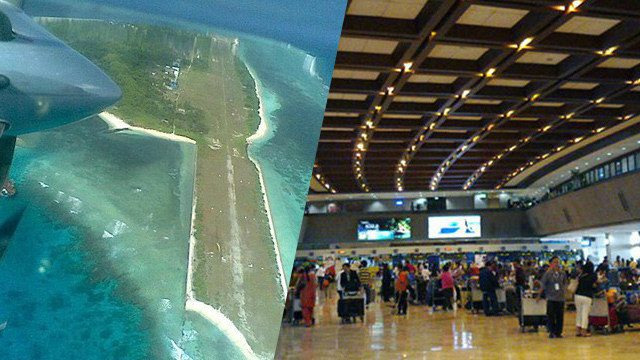SUMMARY
This is AI generated summarization, which may have errors. For context, always refer to the full article.

MANILA, Philippines – Citing the state of the Philippines’ premiere airport, the Department of Foreign Affairs (DFA) refuted China’s claims that the Philippines is building an airport on the disputed Spratly Islands in the West Philippine Sea (South China Sea).
In an interview on ANC’s news program Headstart on Thursday, April 30, DFA spokesman Charles Jose said: “We can’t even do something about our airport here. What more in the Spratlys?”
Jose referred to the Ninoy Aquino International Airport (NAIA), a dilapidated 34-year-old airport in Manila named after the slain father of President Benigno Aquino III.
From 2011 to 2013, a prominent travel guide ranked NAIA as the world’s worst airport. Its ranking “improved” in 2014 – it’s now the 4th worst in the world.
In 2012, the Philippine government pegged the rehabilitation of NAIA Terminal 1 at P1.64 billion* ($36.83 million). The government said it hopes to completely repair the airport by May 2015. (READ: Aquino says ‘worst airport’ looking much better)
At the same time, the Philippines keeps a runway on Pag-asa Island, the second biggest island in the West Philippine Sea. The runway, called the Rancudo Air Field, helps the Philippines assert its sovereignty over the disputed Spratlys.
Like the NAIA, the Rancudo Air Field is damaged.
The Philippines, however, has delayed plans to fix the runway because it awaits an arbitral tribunal’s decision on the country’s historic case against China. Manila expects a ruling against Beijing by 2016. (READ: Philippines vs China hearing set in July)
Lack of funds earlier stalled the runway’s repairs as well, Air Force chief Lieutenant Jeffrey Delgado said on June 18, 2014. “Now we have the funds,” he said, as the Department of National Defense allocated P480 million* ($10.78 million) in 2013 to repair navy and air force facilities on Pag-asa Island.
In his interview on Headstart, Jose pointed out: “We have an airport on Pag-asa. It’s already existing. What we want to do is to undertake some repairs and maintenance.”
Jose made these comments after China criticized a statement by the Association of Southeast Asian Nations (ASEAN) against China’s reclamation activities in the South China Sea.
China hits Philippines for ‘construction’
In the statement from their recently concluded summit, Southeast Asian leaders said: “We share the serious concerns expressed by some leaders on the land reclamation being undertaken in the South China Sea, which has eroded trust and confidence and may undermine peace, security and stability.” (READ: Aquino on ASEAN response to China: ‘Very substantial progress’)
China shot back on Wednesday, April 29. Chinese Foreign Ministry spokesman Hong Lei said the Philippines and Vietnam (another country that claims the South China Sea) “have been carrying out large-scale construction” in the disputed waters.
“Unlawful massive reclamation is underway, airport and other fixed facilities being built and offensive weapons including missiles being deployed,” Hong said.
He said the Philippines, for one, “has built and expanded an airport,” and “built a dock and other facilities” on Pag-asa Island.
The Philippines “has also built so-called tourism facilities” on other parts of the disputed Spratlys.
Hong also scored the Philippines for keeping a grounded military vessel on the disputed Ayungin Shoal.
A 100-meter amphibious vessel, the BRP Sierra Madre, is another means for the Philippines to assert its rights over the Spratlys. (READ: Grounded ship is PH’s last line of defense)
“China is gravely concerned about and firmly opposed to the aforementioned illegal activities, urging the countries concerned to immediately terminate all words and actions that infringe upon China’s sovereignty and rights and interests,” Hong said.
On Thursday, the Philippine military denied that the Philippines is conducting reclamation activities in the West Philippine Sea.
Vice Admiral Alexander Lopez said, “Let pictures speak.”
Recent satellite images show the extent of China’s activities to build artificial islands in the South China Sea.
The Philippines has protested these reclamation activities.
The Philippine fisheries bureau points out that China’s reclamation in 5 reefs in the Spratlys has buried 311 hectares of coral reefs, around 5 times the size of Rizal Park in Manila. This could also result in P4.8 billion* ($107.79 million) in economic losses. – Rappler.com
*$1 = P44.53
Add a comment
How does this make you feel?
There are no comments yet. Add your comment to start the conversation.